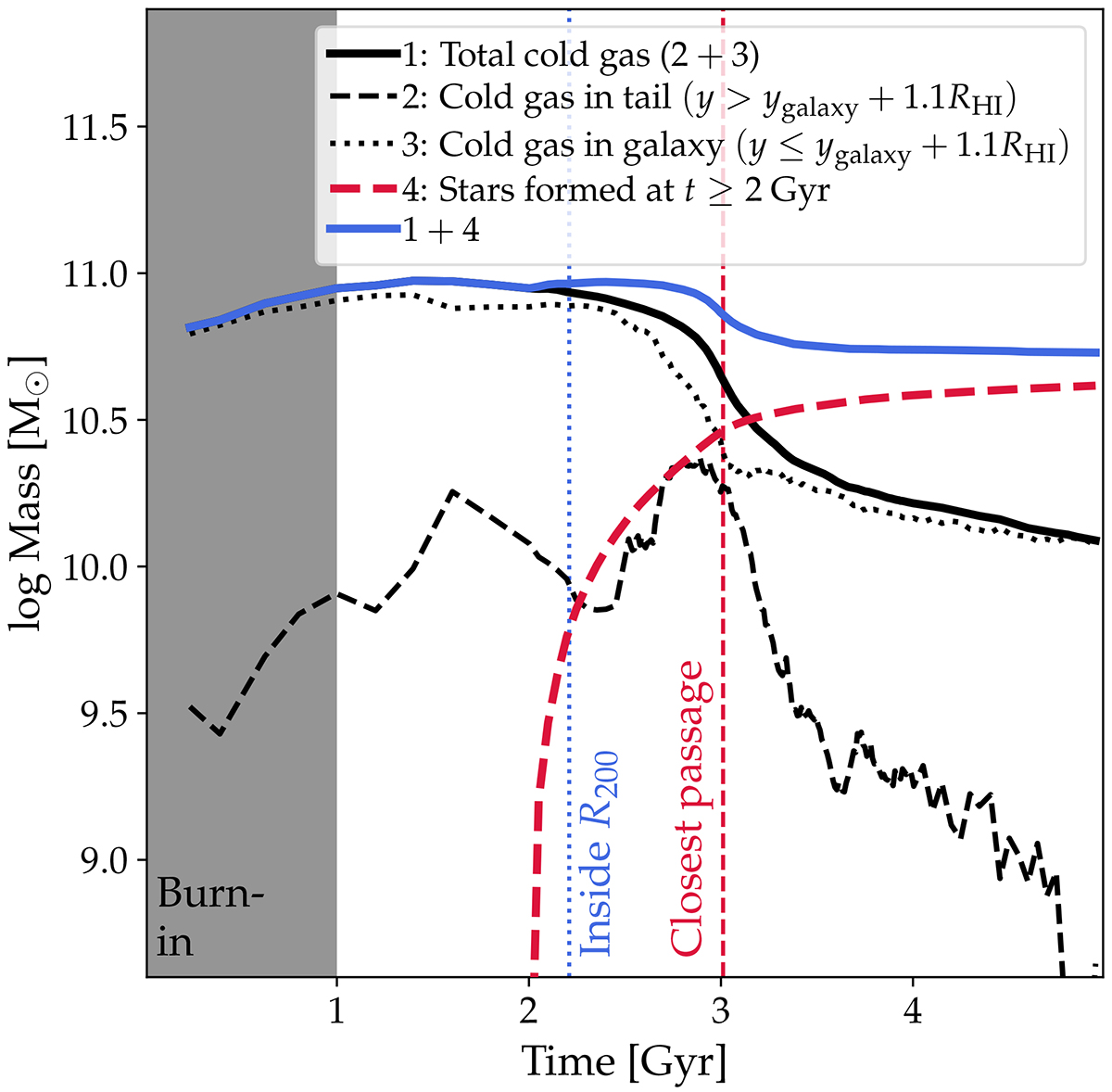Fig. 4.

Download original image
Time evolution of the (1) total cold gas mass (defined as T ≤ 104.5 K) in the simulation, (2) the cold gas in the tail, (3) the cold gas associated with the galactic disc, and (4) the total mass of stars formed since t = 2 Gyr. As expected from idealised simulations of cloud-wind interactions in the regime of large clouds, the cold gas mass of the tail increases after entering the cluster until a time close to the closest central passage. Continued star formation and enhanced ram-pressure stripping of the ISM during the central passage causes a drop of the cold gas in the disc and tail.
Current usage metrics show cumulative count of Article Views (full-text article views including HTML views, PDF and ePub downloads, according to the available data) and Abstracts Views on Vision4Press platform.
Data correspond to usage on the plateform after 2015. The current usage metrics is available 48-96 hours after online publication and is updated daily on week days.
Initial download of the metrics may take a while.


